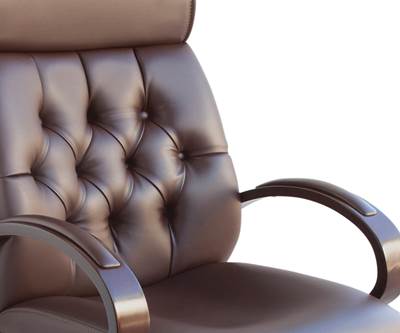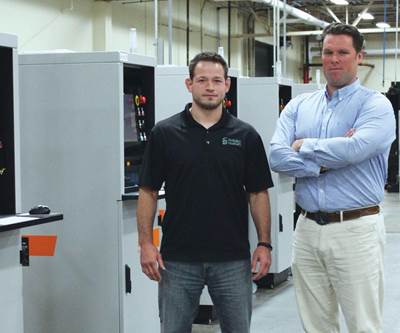How to Implement Additive Manufacturing Across a Global Company: 5 Lessons
With more than 100 facilities and about 200,000 employees worldwide, Flex has a steep challenge in bringing 3D printing into its operations. Five things the company is learning.
Most of us have encountered a product made by Flex (formerly Flextronics) without even knowing it. The company is the “brand behind the brand” for a number of well-known home and lifestyle consumer products, as well as components used everywhere from automotive, industrial and electronics applications to healthcare, mobility and wearables. Flex operates more than 100 facilities across 30 countries, and employs somewhere in the neighborhood of 200,000 people.
At this kind of scale, shifting or disrupting operations becomes a challenge. How do you spread knowledge and implement real change in a global company of this size? In particular, how do you bring additive manufacturing (AM) into such a large enterprise?
That’s part of the task laid in front of Ilan Blaus, head of Global Additive Manufacturing based in Modi’in, Israel. In his three and a half years in this role, Blaus and his AM team have been confronting how to bring additive manufacturing into Flex’s operations on a global scale. To do so means disrupting internal processes with 3D printed jigs and fixtures, production tooling, replacement and spare parts, and more; but it also means incorporating additive manufacturing into customer-facing functional prototyping and scale production.
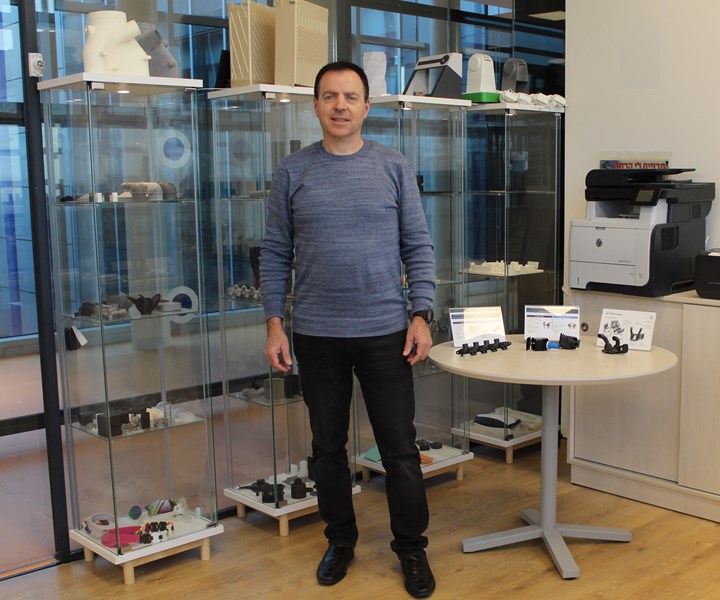
Ilan Blaus, head of Global Additive Manufacturing, is working to bring 3D printing and AM into Flex at all levels of the enterprise. Photos: Flex
In some ways, disrupting operations is not a new challenge for Flex. The company has transformed in recent years from a contract manufacturer making parts to build products, to one that embraces (to use the company’s trademarked term) a “Sketch to Scale” approach — meaning a business strategy that focuses on serving customers from product design and development through prototyping, production and even supply chain optimization.
In a similar vein, Flex has a track record of knowledge sharing across the major industries it serves. Advances in microelectronics might be developed in service of an industrial customer, but that technology could translate into smart sensors for IoT-connected healthcare items or consumer wearables, for example. Knowledge cross-pollination is also encouraged through a new initiative exploring six pillars of rising technology for Industry 4.0 — additive manufacturing is one, alongside automation, machine-to-machine communication, simulation, augmented reality and business intelligence.
But “additive manufacturing” means many different things, and has the potential to bring many kinds of disruption and benefits to a company like Flex. In pursuing those benefits, Blaus and his team are learning some key lessons about implementing additive manufacturing across a global company. Here are five:
1. Centralize, but localize, AM knowledge.
For a company the size of Flex, installing additive manufacturing expertise in every facility worldwide is not strictly practical. But neither is containing (and therefore isolating) all the knowledge in one central facility. The solution it has found instead is a series of additive manufacturing centers to advocate and support the use of AM, placed strategically in different geographic regions: the U.S., Mexico, Israel and China.
These AM centers of competency serve as research labs and proving grounds for additive manufacturing technologies, but they are more than this. They are also training facilities for Flex engineers to share knowledge, best practices and guidelines; providers of rapid prototyping and tooling services for Flex sites globally; and in some cases, production manufacturers for end-use parts.
Flex sees AM’s use expanding one day, leveraging its 3D printing capacity connected via cloud-based software to build parts when and where they are needed. These centers are laying the groundwork that will be needed to deliver on this distributed manufacturing vision.
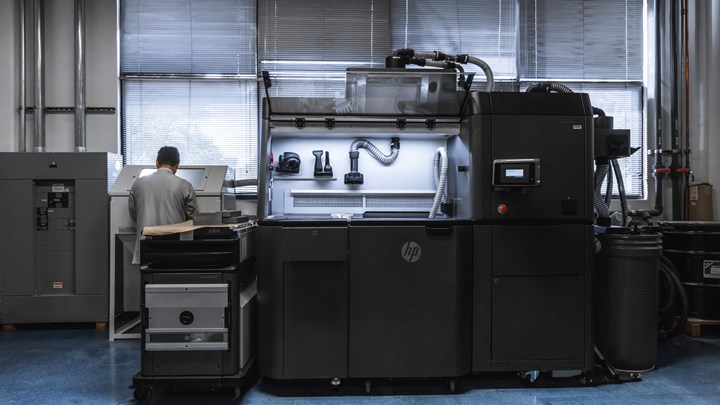
Flex’s AM lab in Milipitas, California, is equipped with several different polymer platforms including HP Multi Jet Fusion. These centers serve as training centers, service bureaus and parts producers.
2. Be proactive in seeking out the problems additive can solve.
Blaus tells a story about a particular “smart” product that Flex was contracted to design and manufacture on a tight schedule. The product was made up of 20 different complex pieces that needed to be assembled together. Flex’s mechanical design engineers reworked the design so that all parts could be printed in one job, optimized for the highest quality at the lowest cost. The AM team delivered benchmark prototypes of a few critical components just two days after speaking with the customer, and completed the order with a fully functional product in just a matter of weeks.
It’s a compelling story about design for additive manufacturing (DFAM) and reduced lead times thanks to 3D printing, but he tells it for a different reason: This opportunity might never have come to the AM team in the first place. The reason it did? One of the design center managers had posted about just one of those 20 original parts in an internal forum, seeking assistance to design for manufacture (DFM) with traditional processes. Blaus happened to see the query and reached out to the poster. That move ultimately delivered a solution for designing and manufacturing the entire assembly faster and at lower cost than it could have been produced otherwise. “Vision and proactivity are mandatory,” he says.
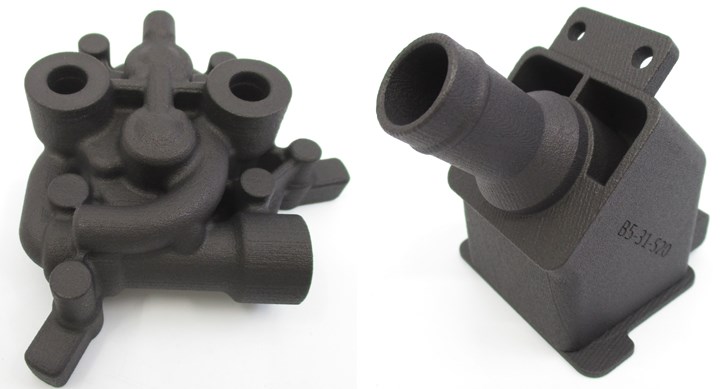
Even industrial parts like this pump manifold (left) and fluid adaptor can be made additively, but this manufacturing method will be most effective if it is known during the design phase. Part of Blaus’s role is to look for 3D printing opportunities like this.
3. Jigs and fixtures make 3D printing visible.
Like many manufacturers these days, Flex is making use of 3D printing for tooling purposes. Almost every one of its production facilities is equipped with industrial 3D printers for supplying the lines with production tooling, robotic end-of-arm tooling (EOAT), spare parts, jigs and fixtures on demand. These items may not be flashy, but they are functional — and seeing them in use on a daily basis is one more way to help employees grasp the potential for 3D printing.
Tooling brings 3D printing closer to top-of-mind.
Implementing 3D printed tooling on the production floor is another case of being proactive. Flex runs site scans for this purpose, bringing AM team members into facilities to speak with employees there and look for opportunities to use 3D printing to solve problems, ease pain points and reduce costs. In addition to adding value on a daily basis, this tooling brings 3D printing closer to top-of-mind when other opportunities arise.
4. Evangelize with experts.
Hironori Baba is a mechanical design engineer on the Global AM team who runs the polymer 3D printing lab within Flex’s Advanced Manufacturing Center in Milpitas, California. He is often in the position of introducing customers to AM and helping them understand its potential for their applications. But an equally important part of his role is to engage with internal teams for many of the same reasons.
“Part of our responsibility is to share what we are capable of,” Baba says. “I try to be active about looking for opportunities to teach.” That means helping colleagues understand the cost savings, time savings, and other benefits that can come from 3D printing, but also clarifying expectations and defining the limits of the technology as well.
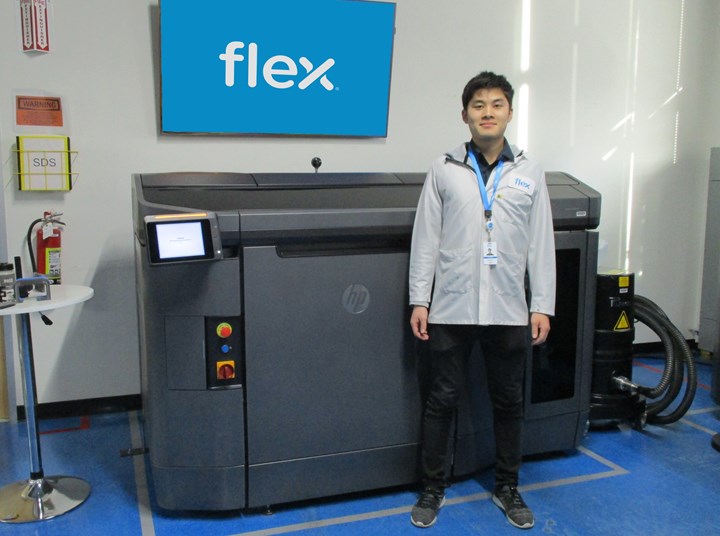
Members of the global AM team like Hironori Baba, shown here in the polymer 3D printing lab at the Milpitas Advanced Manufacturing Center, are both AM experts and evangelists within Flex.
5. Catch customers early.
“We spend a lot of engineering efforts and inventory on design changes that cause reworks and sometimes even scrap and waste,” Blaus says, noting that re-engineering existing parts for additive manufacturing may not be the best-case scenario. “There should be a clear business justification for converting a product already in serial production to additive manufacturing, especially after investing in tooling and building assembly lines based on traditional processes.”
Instead, Flex sees greater opportunities for new applications and products, in the “sketch” part of the “Sketch to Scale” model. If Flex personnel and customers are thinking additively early on, implementing an AM workflow will be much more viable and productive later. That means working closely with the design teams to identify opportunities as they arise and seek collaboration with customers.
“Success is achieved when we start with design for additive manufacturing.”
“Success is achieved when we start with design for additive manufacturing,” he says, explaining that design is the stage where a majority of AM’s benefits may be realized. “It’s not just about the technology, but how we connect technology and business to deliver significant value to our customers.”
Related Content
8 Cool Parts From Formnext 2023: The Cool Parts Show #65
New additive manufacturing technologies on display at Formnext were in many cases producing notable end-use components. Here are some of the coolest parts we found at this year’s show.
Read MoreVideo: Intelligent Layering Metal 3D Printing at 3DEO
Contract manufacturer 3DEO delivers metal parts using Intelligent Layering, a binder jetting-like 3D printing process the company developed and operates internally. Here’s how it works.
Read More3D Printing with Plastic Pellets – What You Need to Know
A few 3D printers today are capable of working directly with resin pellets for feedstock. That brings extreme flexibility in material options, but also requires greater knowledge of how to best process any given resin. Here’s how FGF machine maker JuggerBot 3D addresses both the printing technology and the process know-how.
Read MoreThe New Misperceptions Of AM: AM Radio #35
Tim Simpson and Peter Zelinski discuss a way additive manufacturing has advanced: The misperceptions have shifted. Knowledge of AM among manufacturers is more sophisticated now. The concerns that inform the perceptions of newcomers have therefore changed.
Read MoreRead Next
AM at Jabil: From 3D Printing Materials to Distributed Manufacturing
One of the largest manufacturers in the world has made a significant investment in 3D printing — both as a user and an advancer of this technology. Our original reporting dives into the what and why of additive manufacturing at Jabil.
Read MoreWhat Your CEO Needs to Know About Additive Manufacturing
Additive manufacturing promises to affect far more than manufacturing alone. When evaluating AM, the perspective needed is the view that sees the impacts all across the enterprise.
Read MoreBuilding an Additive Manufacturing Business for Production
What does it look like to build a business based on AM production from the ground up? An Ohio medical device contractor is finding out.
Read More
.jpg;width=70;height=70;mode=crop)

















